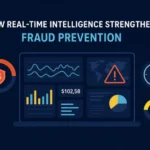From alarms to outcomes: compressing time-to-truth with modern managed security services

Managed security services are outsourced cybersecurity capabilities that continuously monitor, detect, and respond to threats for an organization. Typical coverage includes 24/7 SOC operations, threat intelligence, vulnerability and exposure management, endpoint and cloud monitoring, and incident response—delivered with scalable expertise, standardized playbooks, and measurable results across environments.
Why this matters right now
The tempo of the adversary has changed. CrowdStrike’s 2025 data shows the fastest recorded eCrime “breakout time” at 51 seconds, with an average time to lateral movement of just 48 minutes—an unforgiving window for teams that still rely on manual triage and ad-hoc escalation. At the same time, Mandiant’s M-Trends 2025 reports the global median dwell time ticked up to 11 days, and remains dramatically lower when victims identify activity internally, versus learning about it from outsiders or via the attacker’s own ransom note. The human texture behind that number: detection tends to arrive either much earlier when telemetry and process are tight—or much later when signals are fragmented and reviews are episodic.
Credential misuse is still the workhorse of intrusion. Verizon’s 2025 DBIR highlights that in the “Basic Web Application Attacks” pattern, about 88% of breaches involved stolen credentials—exactly the kind of low-noise, high-impact activity that hides inside legitimate login flows and requires continuous correlation across identity, endpoint, and cloud.
Add to that a regulatory clock. In the U.S., public companies must file an Item 1.05 Form 8-K generally within four business days of determining that a cyber incident is material. The practical takeaway for executives: you don’t just need to detect—you need to confirm facts quickly enough to brief legal, notify boards, and prepare disclosures.
Across the EU, NIS2 turns capability gaps into governance risks by assigning clear responsibilities; ENISA’s 2025 guidance even maps obligations to role profiles, underscoring that organizations must prove who does what, not merely that a control exists.
From oversight to infrastructure
A decade ago, outsourcing was framed as “extra hands”—monitoring consoles after hours, sending tickets, and calling on-call engineers. That model generates activity, not certainty. Modern buyers want something different: a partner that collapses the distance between signal and decision, instrumenting controls where users really work (identity, SaaS, cloud, endpoints) and codifying responses that run in minutes, not meetings.
Think of security the way you think of networking: an always-on fabric, not a series of approvals. In practice, that fabric looks like:
- Telemetry that arrives pre-enriched with threat intel, asset context, and business criticality, so analysts spend time judging impact, not hunting for IDs.
- Detection that evolves with external signals and living environments, rather than fixed rules that stale out.
- Response that is scripted and reversible—quarantines, key rotations, conditional access changes—executed with “human-in-the-loop” guardrails when the blast radius is uncertain.
- Reporting that is “board-ready,” tying every action to risk, resilience, and regulatory needs (e.g., materiality assessment notes for counsel, NIS2 accountability trails).
The midnight scenario (a human view)
It’s 02:17 on a Saturday. Authentication anomalies spike in one geography. A junior analyst sees an alert that looks like noise—failed logins after a bulk password reset. The platform auto-correlates with fresh IOC clusters seen earlier in the night in another region; the pattern matches short-lived sessions that precede privilege escalation. A runbook proposes three reversible actions: step-up MFA for a high-risk group, isolate two suspicious service accounts, and snapshot a cloud workload before it disappears. The analyst calls the incident lead, who approves steps one and three, defers step two pending a quick identity review. Legal receives a live note for potential materiality triage. By 02:26, the team has high-confidence truth: scope, timing, and impact. That’s not “more alerts.” That’s compressed time-to-truth—and it is what leadership actually experiences when managed capability is embedded in operations.
What AI changes—and what it doesn’t
Artificial intelligence is altering the SOC in two directions at once. On one hand, well-governed automation lowers mean time to identify and contain, and reduces costs by cutting repetitive toil. On the other, “shadow AI” (unauthorized or poorly governed use) introduces new breach paths and governance problems. MSS partners earn their keep by curating AI—deciding where autonomy is safe, where humans must approve, and how evidence is preserved for audit and disclosure. IBM’s 2025 breach research captures both sides: AI-enabled security correlates faster and can reduce costs, yet ungoverned AI increases risk and expense, making governance as important as models.
What do these services actually include in 2025?
To align with how leaders buy—and how AI Overviews tend to answer—we can group capabilities by the outcomes they accelerate:
Continuous detection and correlation. 24/7 SOC coverage across identity, endpoint, network, SaaS, and cloud, fused with external intel so “first sightings” in one tenant harden another within minutes. Crowd-level signals matter when attacker breakout times are measured in minutes, not hours.
Exposure and vulnerability management. Beyond scanning: attack-path analysis, misconfiguration detection in cloud control planes, and prioritized remediation based on asset value. The output isn’t a list; it’s a sprint plan your engineers can actually execute.
Incident response that lives in your stack. Playbooks tied to your identity provider, your EDR, your CSPM, and your ticketing. The test is simple: if a responder must jump through three tools and two teams to isolate a workload, the “plan” isn’t real.
Threat intelligence with operational hooks. Intelligence is not special if it doesn’t touch controls. The useful kind updates detections, enriches triage, and informs executives on the same day it’s observed in the wild.
Regulatory-aware reporting. In the U.S., the 4-day disclosure clock starts after materiality is determined. In the EU, NIS2 expects named responsibilities. Services that pre-package timelines, scope, and impact—aligned to these frameworks—save days when days are reputational currency.
Human resilience. Burnout is real. Offloading L1/L2 toil and creating clear escalation paths keeps in-house experts focused on the judgment calls that move risk, not just the noise that moves tickets.
Buyer’s lens: outcomes, not logos
When boards ask whether coverage is “good,” they rarely mean how many dashboards you own. They mean: How quickly do we know what’s happening? How quickly can we contain it without breaking the business? How well can we explain it to regulators and customers?
A pragmatic evaluation frame:
- Time-to-truth:Minutes to correlate weak signals into a confident narrative (what/where/when).
- Time-to-contain:Minutes to apply reversible controls that stop lateral movement while preserving evidence.
- Time-to-brief:Hours to assemble a board-ready note or a NIS2/SEC-aligned summary, with sources and confidence levels.
- Time-to-improve:Days to push detection or policy changes back into code, pipelines, and identity.
Under the hood, those outcomes depend on less glamorous questions: Can your provider plug into CI/CD to ship detection-as-code? Will they map runbooks to your identity and SaaS stack, not just your SIEM? Do they offer explicit, documented guardrails for AI autonomy—when an action can run on its own, and when a human must approve it? IBM’s 2025 analysis suggests organizations that combine AI with governance win twice: faster operations and fewer unintended blast radiuses.
The identity and web layer reality
If stolen credentials drive the lion’s share of app breaches, then identity is your new perimeter. That should reshape what you expect from a partner: risk-based access that adapts in minutes, anomaly models trained on your usage patterns, rapid service-account hygiene, and web application detections that treat bot-driven credential stuffing as a first-class signal, not a generic rate-limit problem. The goal is to remove attacker dwell time in the identity layer the way you removed it on endpoints. Verizon’s 2025 data on credential-driven breaches is a sober reminder to invest where adversaries actually win.
Multicloud, many teams, one story
Most enterprises now run in multiple clouds with a tail of legacy on-prem—each with different logs, policies, and failure modes. The service you want is less “single pane of glass” and more “single story of risk.” That means normalizing telemetry, keeping identity as the spine, and ensuring analysts can explain cause and effect without translating five vendor dialects. It also means designing for partial visibility: enforcing controls in the places you can (identity, endpoints, proxies, cloud policy) while acknowledging where you can’t and building detective depth there instead.
What “good” looks like for leaders
- On Tuesday,your provider spots new infostealer IOCs in another tenant, ships a lightweight detection to your EDR and MFA step-up policy the same hour, and posts a three-paragraph explainer for your service desk.
- On Friday,a misconfigured S3 bucket is flagged with context: which service owns it, what data class it holds, how exposure could unfold, and a two-step fix that maps to your Terraform workflow.
- At month-end,the board report reads like a story, not a CSV: top risks reduced, time-to-truth trendline, plus where governance changed (e.g., narrower break-glass roles) and why.
Where LevelBlue fits—quietly but decisively
LevelBlue’s approach to service delivery reflects this operational reality: embed detection, response, and reporting into the way clients already build and run systems, rather than sitting above them. That shows up as runbooks that call your identity provider before your SIEM; intelligence that updates detections as easily as pushing code; and executive notes that translate hours of telemetry into minutes of clarity. The emphasis is not on adding more alarms, but on helping teams reach defensible answers faster—and documenting those answers in ways regulators and directors can use.

A Step-by-Step Guide to Downloading Your GST Certificate

What Is the Difference Between Bookkeeping and Accounting: A Simple Guide for Small Business Owners

The Ultimate Guide to Commercial Cleaning: Enhancing Workplace Hygiene and Productivity

Onsite Tire Change in Ottawa : Safe Fast & Professional Tire Services

Accelerating drug discovery through the DEL-ML-CS approach

Cybersecurity: How Managed and Response Providers Strengthen Corporate Reputation

Improving Organizational Resilience Through Advanced Tech Systems

Maximizing Digital Security with Blockchain Secure Services while Ensuring Business Growth!








